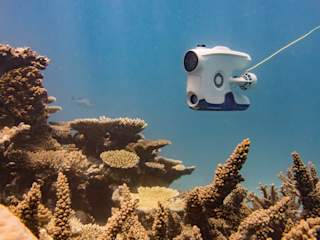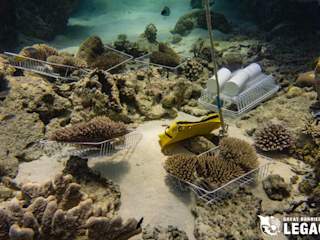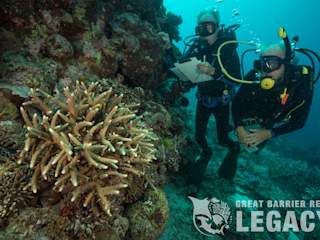Utilizing underwater drones to gather intel on corals
On November 15th The Great Barrier Reef Legacy embarced their expedition called "Search for Solutions". Building on the success of their previous expedition "Search for the Super Corals", GBR Legacy's second expedition refines their ground-breaking model for even greater impact. This expedition was focused on why specific sites and corals did better than others in the wake of the 2016/17 mass bleaching, and how to support restoration options to ensure the long-term survival of coral reefs into the future.

Exploring the Great Barrier Reef
Photo: GBR LegacyGreat Barrier Reef is streching over 2000 kilometres along the North-East coast of Australia. The corals are forming the vital base of the marine eco-system which in this area is home to over 5000 unique fish species, and thus the World's richest ocean environment. In addition, several hundred million people depend - directly or indirectly - on the world's reefs for their livelihood.
There is a large number of spawning fish species in this region. This activity indicates that it’s the time of year that the reef depends on to replenish itself - and this is also the reason why this expedition takes place this time a' year; so the researchers can document the single largest reproductive event on the planet - the mass spawning of corals!

Coral spawning
Photo: GBR LegacyThe unknown effects of mass bleaching
Over the past two years mass bleaching has caused a massive negative impact on the Great Barrier Reef. As much as 60-70% of the northern 70 miles have died during these events. The long term effects remain unknown, but scientists agree that they will be of huge significance, and negative short term.
BUT - there's still hope; during their first research expedition GBR Legacy recorded over 195 different species of corals in a space no longer than 500 meters! And by using the Blueye Pioneer underwater drone, the team was able to discover new corals down to 80m depth.

Collecting coral samples
Photo: GBR LegacyThe GBR Legacy team have also been collecting coral colonies for the Australian Institute of Marine Science during this expedition. These samples are now being used for breeding stock and genetic studies back in their lab.
We look forward to continue this collaboration - there's no barriers too great to save our reefs!
Read more about our collaboration with the Great Barrier Reef Legacy.




